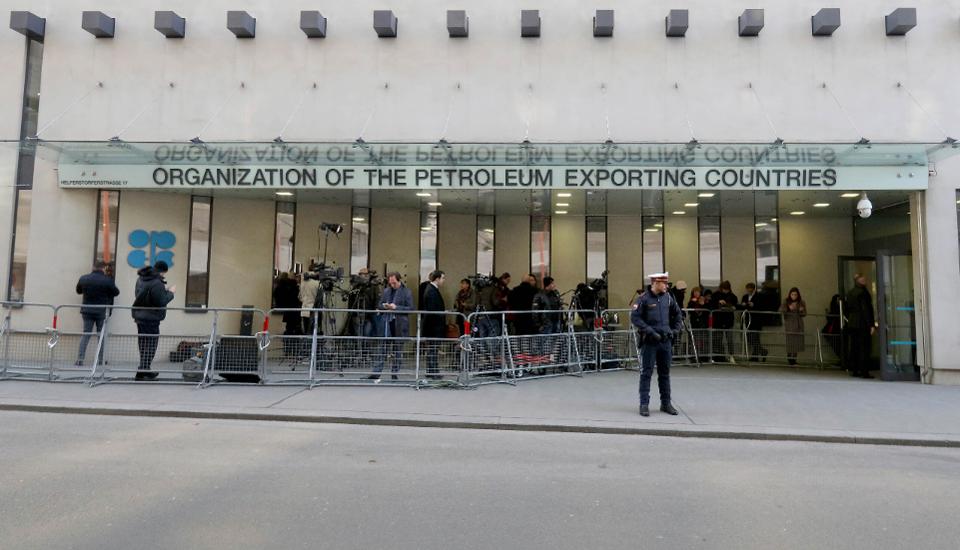
People stand in front of the headquarters of the Organization of the Petroleum Exporting Countries, … [+]
ASSOCIATED PRESS
roducers are unlikely to cut production enough to meet the huge drop in demand. The crucial question is: will they be able to reduce the inventory overhang after the pandemic is over? If demand is suppressed by an average of 15 mb/d for 3 months (heavily front-ended), that increases inventories by 1350 million barrels! That might not seem like much, compared to OECD inventories of 3,000 million barrels, but the truth is that most of that inventory is what the industry calls “minimum operating levels,” that is, pipeline fill, tank bottoms and so forth, which cannot really be used.
“Usable” inventories are more like 400 million barrels (rough guess), meaning that the overhang would roughly triple the amount of inventories that matters. (I’m assuming half of the overhang goes to non-OECD storage. Again, rough guess, no one really measures non-OECD inventories or storage capacity.) The graph below shows what inventory levels are likely to be given the back of the envelope calculations above.

COVID19 Effect on Inventories
The author (IEA data for actual)
If one assumes that demand returns to normal in three months (which is optimistic), it will be necessary for OPEC+ to cut production roughly 2 mb/d for nearly two years to work off the overhang! Given that the February OPEC+ meeting fell apart over the need to cut less than 1 mb/d, this is clearly going to be difficult and suggests that the group will not be able to raise prices back to the $60-70/barrel range, which would allow their competitors to continue expanding production. I would argue that the degree to which shale production declines or expands after the pandemic is over will be a good indicator of what price level is sustainable.
Some other things that need clarifying:
Global oil inventories are highly uncertain. Only OECD inventories are reported on a (somewhat) timely basis. Traders focus on U.S. inventory reports the way drunks look for their keys under a streetlamp: the light is better. And storage capacity estimates are just that, estimates. The National Petroleum Council used to make occasional reports of industry storage capacity, but for most of the world, especially outside the OECD, numbers tend to be guesses. (If anyone knows of actual data, please inform me.)
Reports of full tanks are anecdotes, valuable but not definitive. There are any number of reasons why a given location or company might or might not have full tanks that are unrelated to global market conditions. Take with a grain of salt.
Oil producers’ revenue needs are an interesting factor, but far from determining. Most countries have seen revenues far below their ‘needs,’ for much of the past half-century. The 1986 price collapse left most producers in bad, if not dire, financial straits for a decade and a half.
The futures strip is not a prediction of prices or an indication of what people anticipate prices to be, but of the current value of a barrel at a future point in time. The strip can rise or drop all along its length at any time depending on a variety of factors, including traders’ expectations of the future market balance, but also storage costs, interest rates, etc.
Cost does not determine price, and they do respond to some degree to prices. Operating costs are a fraction of total costs, and shutting down production is typically threatened much more often than it is undertaken. Shut-in production will probably be dominated by lack of demand (and storage).
Ultimately, the floor price will be the result of what traders think the oil price floor is, to paraphrase John Maynard Keynes, but that will be determined by, first and foremost, expectations of demand recovery, the state of inventories, and the ability of OPEC+ to balance the market, post-covid19. Which depends on just how much surplus supply goes into storage the next few months.























